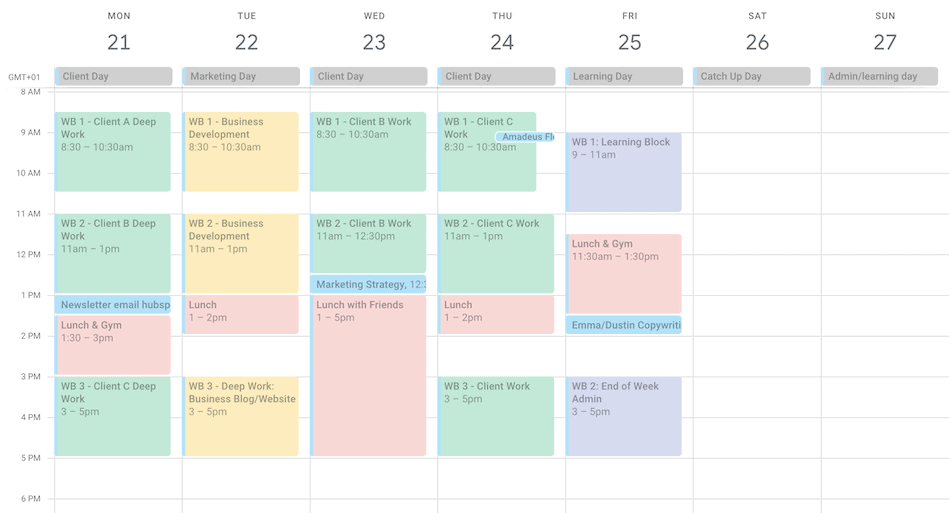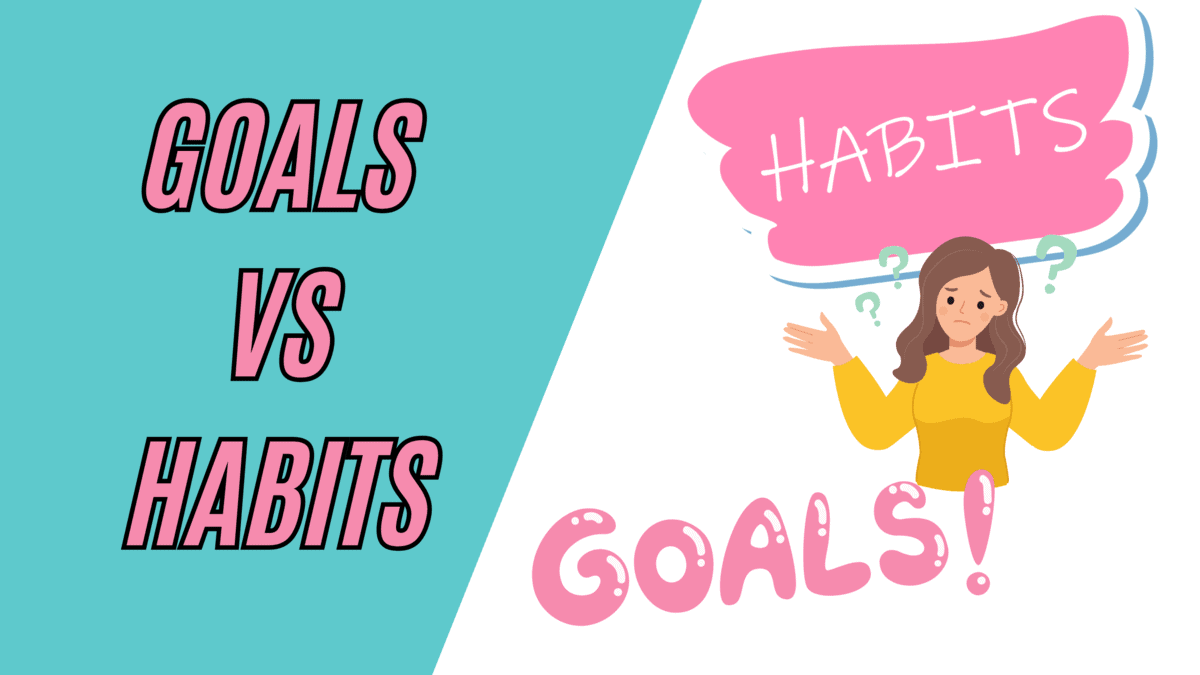Back in the day, the 40-hour workweek was kinda genius and actually based on data about productivity.
Nowadays? It’s an archaic notion that isn’t serving us.
Stick around and I’ll tell you why, and what to do instead as a freelancer trying to master time management.
Who Invented the 40-Hour Workweek?
Henry Ford didn’t just bring us cars, he brought us the 40-hour workweek. Whether we should be thanking him or hating him for that I’m not sure but the background to it is pretty interesting…
In 1926 he cut his workers’ week from 48 to 40 hours with no cut in their wages. Bearing in mind he also already paid his workers remarkably well for the time, this was huge. So why’d he do it?
He realized that those extra 8 hours they were working only yielded a small extra increase in productivity, so giving the workers an extra day off made more sense. It was based on data and logic and we can all agree it was the right thing to do, can’t we?
But even though times have changed immensely since 1926, most companies are still using the 40-hour model.
And now the history lesson is over…

Why Should You Care as a Freelancer?
We freelancers have the luxury of having a choice to not stick to the classic 40-hour workweek.
It’s easy to fall into feeling like we have to stick to the schedule of our regular 9-5 working friends and family.
Some may even pressure you to do so.
But the reality is that freelancing gives you the freedom to make your own rules when it comes to your work schedule.
If you’d rather work a Saturday and take Wednesday off then do it. If you’re a Mom who only works during school hours then own it. And if you’re in serious growth mode and working 7 days a week for a while then that’s absolutely fine too.

Use the 9-5 Work Week as a Guide, Not Gospel
As a new freelancer – or an experienced one who just wants to get a handle on their productivity – scheduling and prioritizing your times to fit into a 40-hour work week can be a great way to get your feet on the ground.
It can provide focus and clarity around what you can fit into a typical week.
But, that does not mean 40 hours of client work or writing or whatever it is that directly brings in the cash.
Try to stick to the 20-hour rule.
That’s 20 hours of doing direct revenue-generating work “in” your business”. The other 20 or so hours should be spent working “on” your business by doing all the other stuff that’ll help you grow like systemizing processes, being creative, and long-term strategizing – all that juicy stuff.
That’s where time management really comes into play.
How Does This Help Me With Productivity?
Like I said, there’s only so much deep work you can do in a day (with the exception of serious hustle days when you’re up against a deadline). But generally, the average person can’t consistently do more than around 4 hours of deep work in a day.
So do not feel guilty for not working 40 hours and filling it with deep work.
Trying to do endless hours of deep work isn’t productive.
And besides, the average office worker does not put in 8 hours of deep work in a day just because they’re physically at work. On average, they actually have around 3 productive hours in a given day.
That’s why, as a freelancer, it’s super unproductive to pack your workweek with 40 hours of work and expect it to all get done – and for it to get done well.
Optimizing for your peak productive times is more productive than just filling your time. It’s ok to not do your best work between 9 am and 5 pm. It’s also more than ok to finish at 12 pm because you’ve done 3 hours of productive, deep work that morning and you’ve ticked off your whole to-do list.
Throwing out the archaic notion of the 40-hour workweek and creating the optimal workweek for your freelance business is the most freeing and productive way to manage your time.

How to Create the Optimal Workweek as a Freelancer
Master your productivity and your work week can look however you want it to look. There are so many time management techniques, and productivity hacks out there to design your ideal work life.
So, to get you started, here are my top 5 tips for throwing out the 9-5 mindset and creating your own workweek:
Tip #1: Set Artificial Deadlines
Things take as long as you let them take.
As your own boss, the single biggest tip I have for you is to set yourself artificial deadlines. Set deadlines for everything from client work to content creation to doing your laundry.
If your work is due on Friday, set yourself a deadline of Wednesday so you’ve got a grace period that minimizes your stress. You didn’t sign up to start this freelancing thing to be stressed and burnt out, did you?
Tip #2: Theme your days
This one I only implemented myself very recently and it revolutionized how I manage my time and plan my workweek.
As a freelance copywriter and content agency owner, my theme days look like this:
Monday: Client work day
Tuesday: Marketing and business development
Wednesday: Client delivery day
Thursday: Content, content, content
Friday: Freedom Friday
Saturday: Learning day
Sunday: Relax and Regenerate
I have Copyhackers to thank for my theme day schedule. Their 10X Freelancer course had me rethinking everything (in the best kinda way) right from module one.
This schedule also feeds into tip #1. At our agency we usually deliver work to clients on a Friday, so setting an artificial deadline for client completion on Wednesday means all deliverables are boxed off for the week two days before they actually need to be delivered – giving us the grace to do a final run-through on Friday with fresh eyes before we send it off.

Tip #3: Create a Weekly Plan. Every 👏🏼Single 👏🏼Week.
What are your non-negotiables for the week?
What are your bigger goals or projects to work towards for the month or year that you need to contribute to this week?
What commitments do you have outside of work this week?
Map out all of these things in a master to-do list, and then fit them into your schedule for the week.
Remember, your weekly schedule should reflect the actions you need to take to move towards your goals, just like we outline in our weekly goal-setting blog post.
How you actually do that leads me to tip #4…
Tip #4: Time Block Like Your Life Depends on It
This is one of my personal favorite tools for time management – dedicated blocks of time throughout the day in which you do set tasks. It not only helps you prioritize your tasks but also sets mini artificial deadlines throughout the day that help boost your focus and determination to get everything ticked off before the end of the block.
For example, in my calendar, I have three 2-hour blocks each day and then I plan out my to-dos based on what I want to accomplish or group together in each block.
And guess what… of course, we have a blog post that goes into exactly how to use time blocking to successfully manage your time.

Tip #4: Break Down Larger Projects Into Weekly Buckets
Last but not least, make sure you break your larger projects into weekly chunks if they span multiple weeks.
A huge mistake I often made when I started freelancing was to set a final deliverable day for a project, and then let it drop off my radar until the week of the deadline, only to realize I really needed to work on it over multiple weeks.
This is essentially good project management that I’m preaching to you right now.
Good project management = good time management.
Start every project by breaking it down, prioritizing, and listing separate tasks (with artificial deadlines) so you can use them to feed into your weekly plan.
What Now?
Breaking away from the 40-hour workweek, being able to set your own schedule, and maybe even figuring out how you turn your workweek into 30 or even 20 hours takes commitment.
Commitment to:
- Optimizing your time (and stop procrastinating)
- Optimizing your processes (by outsourcing, automating, and scrapping non-essential tasks)
- Honing your craft (so you can do the best work in less time and charge more for it)
But I know you got this!
We don’t have to stick to the old rules.
So go make your own schedule and design a workweek that makes you happy – not what Henry Ford decided was best for us!




